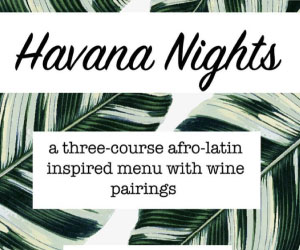Entertainment
Robert Townsend Presents a Limited Viewing Documentary: Making The Five Heartbeats
Published
6 years agoon
By
BLAQER MediaThe Five Heartbeats are back!
No, award-winning actor, comedian, and filmmaker Robert Townsend has not created a sequel or a remake of his 1991 classic about the rise and fall of a 1960s R&B vocal group. In fact, he’s developed a new documentary, Making The Five Heartbeats, sharing an instructive and inspiring journey expected to resonate with fans who can’t get enough of the movie as well as entrepreneurs in pursuit of their dream business. On Monday, Aug. 27, they will discover how he achieved this milestone when Fathom Events presents the theatrical release in nearly 500 AMC movie theaters nationwide for a single screening at 7 p.m. local time, through its Digital Broadcast Network (DBN).
At select theatres nationwide—from Philadelphia to Crenshaw—audiences will also view an exclusive welcome from Townsend as well as gain the opportunity to participate in talkbacks with Townsend and cast members, including Heartbeats Leon Robinson, Michael Wright, Harry Lennix, Tico Wells, and John Canada Terrell.
The Chicago native says of the project: “It’s one part a master class with Robert Townsend. But then on the other side, it’s for anybody who says, ‘What does it take to make something that is now a classic? How much energy did you put into it?’ And as an entrepreneur that wants to build something, what does it take to build that? What kind of obstacles will I have to overcome to get there? And when does my faith come into it? So it’s all of these elements tied into this one documentary.”
The film was released in 1991 at the height of a cinematic era dubbed “The Black Film Renaissance.’ During that year, roughly 17 films directed by African Americans opened in theaters, more than in the entire previous decade. Unlike large numbers of films that dealt with criminality and gang violence—Boyz N The Hood, New Jack City, and Straight out of Brooklyn—Townsend’s tale has stood out as a touching, multidimensional musical drama. Inspired by The Dells, the legendary, soulful quintet that produced such timeless classics as ‘Oh What A Night’ and ‘Stay In My Corner,’ the film resonated with audiences due to themes tied to aspirational sacrifice and unshakable brotherhood. At the same time, the film, co-written by Townsend and In Living Color creator Keenan Ivory Wayans, had healthy helpings of humor and a heart-stirring soundtrack in which two songs, “Nights Like This” and “A Heart is A House for Love” became Top 20 hits on the U.S. Billboard Hot R&B Singles Chart some 27 years ago.
Although Townsend, one of four recipients of BLACK ENTERPRISE’s XCEL Award at the 2017 Black Men XCEL Summit, admits that the film didn’t perform well at the box office, which garnered gross receipts of $8.75 million, the entrepreneur who financed his first film, Hollywood Shuffle, with his savings and a wallet packed full of credit cards, used his creativity and savvy to develop offshoot vehicles to capture new audiences. After more than three decades of creating films that have told different, unique stories of African American life—in fact, Meteor Man, the first black superhero film he created and helmed is celebrating its 25th anniversary this year—Townsend talked with BLACK ENTERPRISE Editor-In-Chief Derek T. Dingle about his mission to produce his most personal film to date..
Why did you think it was important to develop a documentary about the making of The Five Heartbeats at this time?
Fans really love The Five Heartbeats. Everywhere I go, people talk about The Five Heartbeats. Out of all the movies and television shows I’ve done, that’s the one that people want to know: How did you do auditions? Why did you cast that person and how did you direct it? Can there be a sequel to The Five Heartbeats?
I started to think about my journey to make the movie. There’s so much drama that went on behind the scenes, and people think it was just smooth sailing. I should share these stories because they love the movie so much, and maybe it’s another way to give the fans an insight into my process. This will be the first time I will really let people into my creative process. But also, I think it’s exciting to hear about the roller coaster ride to make The Five Heartbeats.
Does the film also explore the business process such as film financing and marketing?
The film goes into that because nobody wanted to make The Five Heartbeats. The money that I needed to finance it became part of the problem. The documentary also goes into the marketing side of the film because a lot of people don’t know that the movie bombed at the box office. We didn’t do well. It takes you on the ride of what went wrong with its marketing, the trailer, the timing. And then it is also a lesson on how word-of-mouth is the best advertising. From a business side, it gives you a glimpse into how you finish this film that you think is brilliant and it didn’t work…but then it worked. So there are lessons on marketing and the business of show business.
How much did it cost to produce the film? Did you meet budget or did you have to scale back your larger vision?
I started with Hollywood Shuffle; that was done for no money at all. I went from no money to a budget of $8.7 million. That’s a lot of money but it’s a little bit of money when you’re trying to do a period piece where you’ve got to make sure that everything—the cars on the street, the hairstyles, the wardrobe—looks like 1965. So your budget gets turned upside down because you’re recreating the look. So on that front, I didn’t have all the money in the world. I had a lot more than I had been used to. And because I was going after this classic, I took way too much time and got in trouble with the budget of the film. In the documentary, you’ll see what happened due to the pressure I was under because I was over budget.
So how challenging was producing this documentary?
Creating the documentary was a lot of trial and error. I started working on this about 10 years ago. I thought I knew what the documentary was going to be but then it started to take me in different directions. This is when you just got to listen to your creative voice. First, it was going to be just a straight-ahead documentary where everybody just talks about how the movie was made. Then I said, I’m not going deep enough.
There were certain things that only I knew. Like the actors, they know about the filming and the release of it. They didn’t know about the studio, the late nights when the phone calls to hear that you don’t have any money or ‘We don’t like that scene, cut it.’ We got into the director-producer realm, and I couldn’t share with anybody the pressure and stress that I was under to make the film. So as I looked at the documentary again, I said, ‘No, Robert, you’ve got to talk about these business lessons that are going on behind the scenes and how you had to negotiate and be strategic in giving and taking what really mattered to you. Then when do you put all your cards on the table and say ‘you’ve got to do it my way or I’m out.’ It’s the art of negotiating as a filmmaker to get your baby born. All of that changed the documentary and made me take a longer time because I wasn’t ready to tell the real story.
When the original film came out, you found different techniques in terms of marketing and outreach to new audiences to make it a success. Did that experience evolve into an ongoing strategic approach to extending creative properties and make connections with audiences beyond a given film?
I think that I’ve always been kind of a serial entrepreneur. I’ve always looked at unique opportunities. I’ve always been fearless in taking chances and trying new things. With The Five Heartbeats, my vision has always been huge where I can say, ‘the movie lives in one universe but there could be a road show that we could take with The Dells.’ And that’s what I did, I created a revue. Right now, Keenan and I have been working behind the scenes on the Broadway show. We want to create The Five Heartbeats brand and take it to Broadway like Dreamgirls. So that’s another part of the vision.
What role has digital technology played in the brand building process?
I just think as an artist, with all the new moving pieces of content, there is a way now with social media to connect to your audience. From a marketing point of view, I have been tweeting every day and using different social media platforms to promote this documentary. It’s been interesting to watch because just on my tweeting alone, I have been able to engage close to 1 million people. So the game has changed, and I’m still learning.
What other aspects would you like to share about this production?
Though the documentary is about the making of The Five Heartbeats, it’s really an inspirational journey for every dreamer that wanted to give birth to an original idea. That’s really what it’s all about. It’s just seen through the eyes of a filmmaker of color. So I think that for entrepreneurs who want to be inspired and see a journey that is not for the faint of heart, this is the ticket for them.
The post See Robert Townsend’s ‘Making The Five Heartbeats’ For a Master Class On the Business of Entertainment appeared first on Black Enterprise.
You may like
-
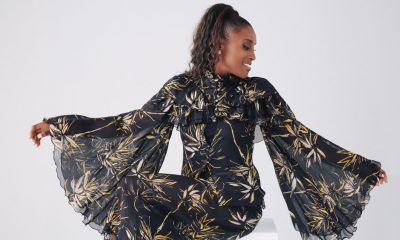

Issa Rae and Columbia Pictures Sign Multi-Picture Production Deal Promoting Diverse Screenwriters
-
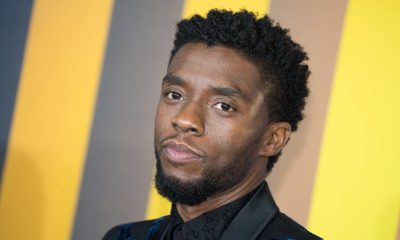

Chadwick Boseman Lands his Next Role in New Police Drama “17 Bridges”
-
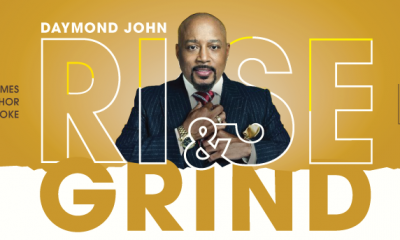

BLAQ Entrepreneur Book Recommendation: The Hustle, the Pursuit, the Drive, the “Grind”
-
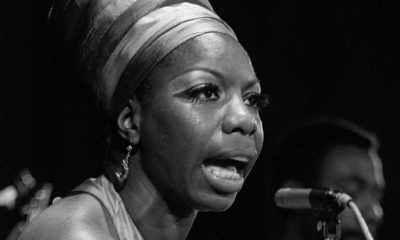

Nina Simone’s Childhood Home Recognized as a National Treasure
-
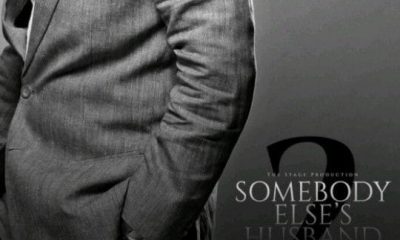

A Dynamic, Drama Filled, Stage Play in Houston: July 1, 2018
-
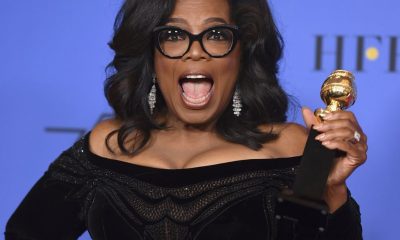

The incredible rags-to-riches rise of self-made billionaire Oprah Winfrey
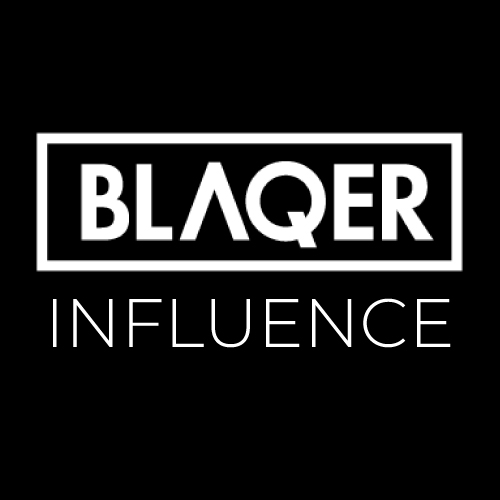
In this episode, we chat with 2 of the co-founders of the Black 10K Project, a crowdfunding platform recently launched with the idea of enabling black investors to invest in black businesses and startups. We dig into some of the details around how they started but, more importantly, what they hope to accomplish with this endeavor. This is an amazing cause that I want to be sure everyone is aware of as so many folks will benefit, and you can get on the action as well.
You can also listen and follow our podcast station on Spotify
Entertainment
Entrepreneurship-Based Show ‘Hustle’ is Coming to Viceland
Published
5 years agoon
February 11, 2019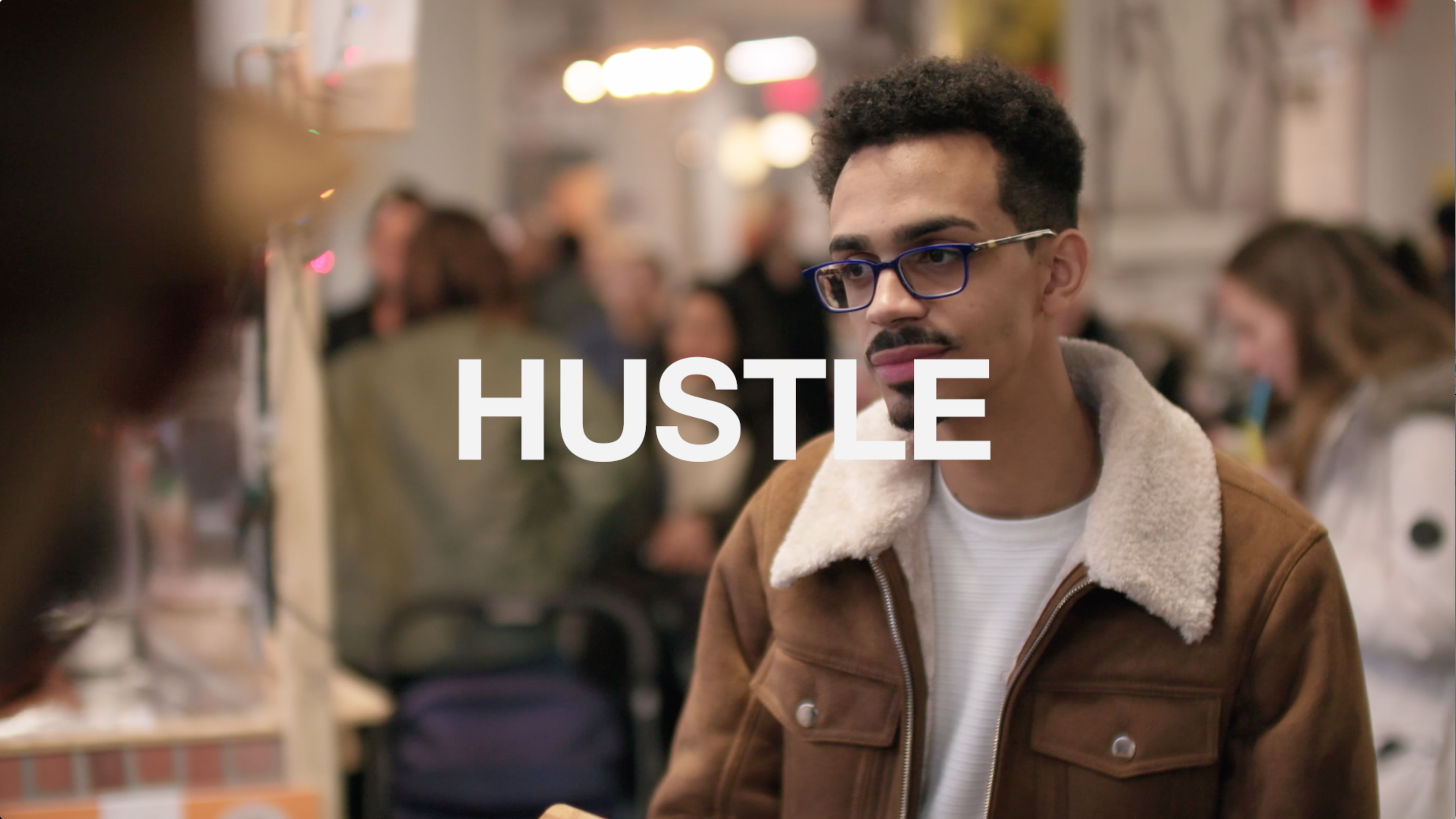
Viceland is taking a dip into the startup space with its newest show, Hustle. Just wrapping up production in New York City, the series stars John Henry, a Dominican-American business owner and investor who by 26 has already sold his first company and launched a venture capital fund named Harlem Capital.
The premise of the show is surrounding the new entrepreneur and what it takes to successfully launch a company and get it off the ground. Henry seeks out other New Yorkers, like himself, and helps them turn their business into startups with true potential, pinpointing the exact issues holding them back. He gives them guidance, direction, and resources but, not without putting them to the test. His goal is to set them up with opportunities for their businesses that could potentially catapult them, but it really is up to them whether they sink or rise to the challenges.
So why did Henry take on the challenge of mentoring entrepreneurs in a docu-series format? “When Beth Greenwald originally came to me with the essence of this idea, I knew I wanted to be involved,” says Henry, “We were both passionate to produce and deliver an authentic look at the entrepreneurial journey. Silicon Valley’s narrative has been well documented. But what about the entrepreneurial journey of the rest of the country? And particularly, diverse business owners and entrepreneurs whose perspective has often been overlooked. Thus, Hustle was born.
Hustle puts Henry’s mission of empowering diverse young entrepreneurs on its feet and as he states, “gives the world a new perspective.” That mission has attracted two celebrity entrepreneurs and bona fide New York success stories as executive producers: 15-time Grammy Award-winning singer-songwriter, musician, producer, actress, best-selling author, and activist Alicia Keys and multiple award-winning chef and restaurateur, TV personality, best-selling author and philanthropist Marcus Samuelsson. The show premieres Feb. 10.
Events
Disney Celebrates Black History Month: Gives $1.5 Million to United Negro College Fund and Free ‘Black Panther’ Tickets
Published
5 years agoon
January 31, 2019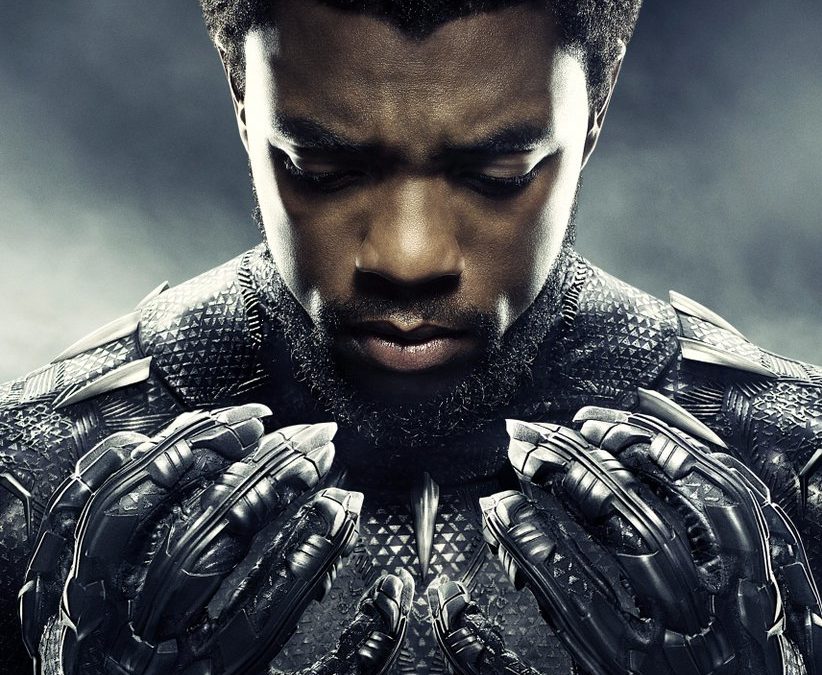
The Walt Disney Co. announced it is helping to celebrate Black History Month. The legendary studio is giving a $1.5 million grant to the United Negro College Fund. Additionally, the company will offer free screenings of its mega-hit movie Black Panther from Feb. 1–7, at 250 AMC theaters around the country.
“We know that providing aspiring young minority talent with scholarships and professional development opportunities is vital to making their dreams a reality,” said UNCF President and CEO Dr. Michael Lomax via a press release. “UNCF is grateful for Walt Disney Company’s enduring commitment to expanding these types of opportunities, and we’re excited to continue to do so through our Walt Disney Company/UNCF Corporate Scholars Program. I recall the excitement we all had when Black Panther was first released and it’s fantastic that Disney is bringing the record-breaking movie back to the big screen so that we can relive that excitement. Wakanda Forever!”
Black Panther went on to become the 7th highest-grossing movie of all time in the country and the 14th highest globally.
The movie has captured several Oscar nominations, including awards for Best Picture, Best Production Design, Best Costume Design, Best Original Music Score, Best Original Song, Best Sound Mixing, and Best Sound Editing.
“Black Panther is groundbreaking for many reasons, including the rich diversity of voices behind its success,” said Bob Iger, chairman and chief executive officer of The Walt Disney Co., also through a press release. “The story also showcases the power of knowledge to change the world for the better, and the importance of ensuring everyone has access to it. We’re proud to provide thousands of free screenings of Black Panther in hopes it will continue to inspire audiences and to support UNCF with a $1.5 million grant to make the dream of higher education a reality for more students.”
The Black Panther movie has inspired a new wave of Afrocentrism. For instance, the blockbuster sent demand for African fabrics and clothing, skyrocketing. The movie also inspired hip-hop star, Akon, to create a real-life Wakanda, using the latest technologies of blockchain and cryptocurrency.
Disney has made other donations in the wake of Black Panther’s success. Last year, it donated $1 million to expand STEM programs in Oakland, along with 11 other areas, including Harlem, Chicago, New Orleans, Washington, D.C., and others. The company also gave $1 million to the Girls and Boys Club of America.
CEO Iger also hinted last year that a Black Panther-inspired theme park is in the works.
To see where you can catch the free Black Panther showings, check out the list of the participating AMC theaters.
Culture
“Black Panther,” “Black KkKlansman,” Regina King, Spike Lee and More Nominated for 2019 Academy Awards
Published
5 years agoon
January 22, 2019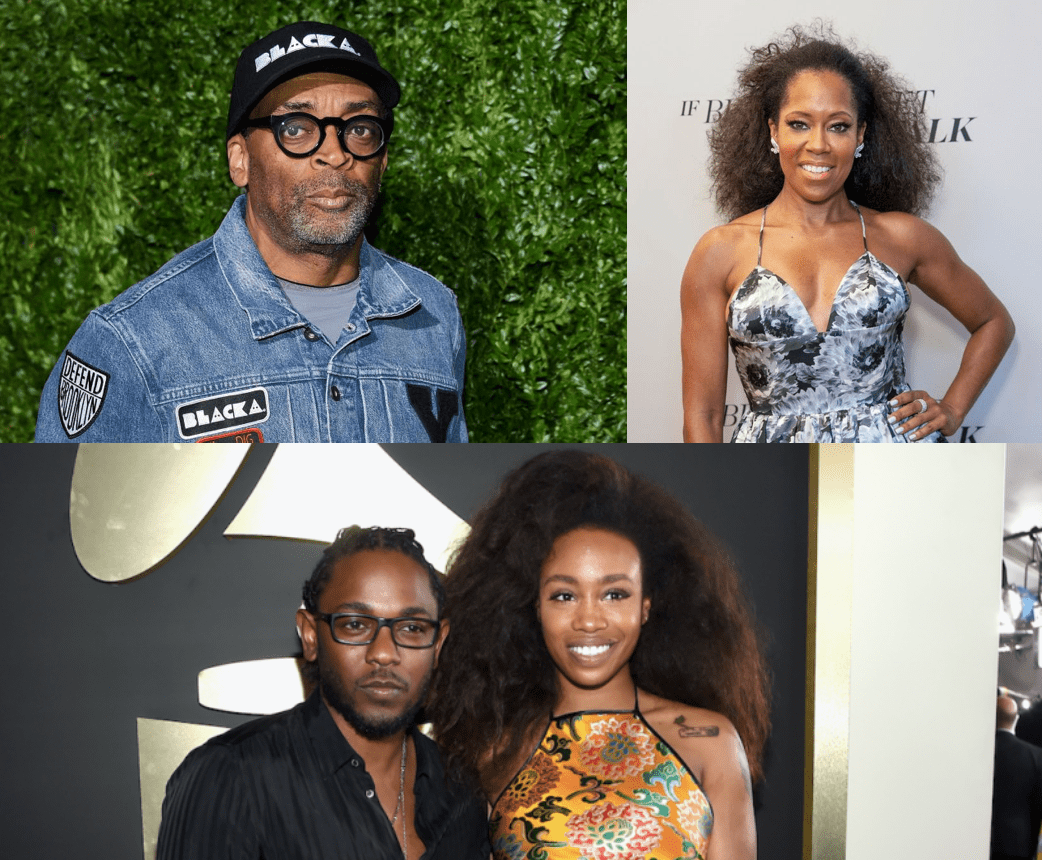
The nominees for the 91st Academy Awards were announced early this morning by Black-ish star Tracee Ellis Ross and The Big Sick star Kumail Nanjiani, and among them were for the first time a superhero movie nominated for Best Picture, Black Panther, and the prolific Spike Lee‘s first nomination in the Best Director category for Black KkKlansman, which also was nominated for Best Picture.
Ever since the #OscarsSoWhite controversy of 2016, the demand for more diversity in movies and television has gained and retained attention. Although there are no African-Americans among the Best Actor or Best Actress nominees, Mexican actress Yalitza Aparicio was recognized for her work in Roma, and among the nominees in the Best Supporting Actress category are Golden Globe winner Regina King for her turn in If Beale Street Could Talk, and Academy Award winner Mahershala Ali, who garnered his third Oscar nomination for Best Supporting Actor in Green Book.
Other notable African-American Oscar nominees this year are Kendrick Lamar and SZA in the Original Song category for “All The Stars” from Black Panther, and Academy Award winner Jennifer Hudson, who might win for what she first became known for as she is also nominated (with Diane Warren) in the Original Song category for “I’ll Fight” from RBG.

Peter Ramsey, who is co-director on Best Animated Feature Spider-Man: Into the Spider-Verse, and Barry Jenkins in the Adapted Screenplay category for If Beale Street Could Talk. Spike Lee earned a second nod in the Adapted Screenplay category as one of the writers of Black KkKlansman.
Another first this year is Hannah Beachler‘s nomination for Production Design for Black Panther, the only African American woman to receive one in this category. Ruth E. Carter earned her third nomination for Costume Design (the first two were forMalcolm X and Amistad) for Black Panther and composer Terence Blanchard, who has scored more than forty films and all of Spike Lee’s, finally earned an Original Score nomination this year for his work on Black KkKlansman.
The Oscars will be broadcast live by ABC on Feb. 24 at 5 p.m. PT/8 p.m. ET. Below is a complete list of all the nominees:
Best Picture:
“Black Panther”
“BlacKkKlansman”
“Bohemian Rhapsody”
“The Favourite”
“Green Book”
“Roma”
“A Star Is Born”
“Vice”
Lead Actor:
Christian Bale, “Vice”
Bradley Cooper, “A Star Is Born”
Willem Dafoe, “At Eternity’s Gate”
Rami Malek, “Bohemian Rhapsody”
Viggo Mortensen, “Green Book”
Lead Actress:
Yalitza Aparicio, “Roma”
Glenn Close, “The Wife”
Olivia Colman, “The Favourite”
Lady Gaga, “A Star Is Born”
Melissa McCarthy, “Can You Ever Forgive Me?”
Supporting Actor:
Mahershala Ali, “Green Book”
Adam Driver, “BlacKkKlansman”
Sam Elliott, “A Star Is Born”
Richard E. Grant, “Can You Ever Forgive Me?”
Sam Rockwell, “Vice”
Supporting Actress:
Amy Adams, “Vice”
Marina de Tavira, “Roma”
Regina King, “If Beale Street Could Talk”
Emma Stone, “The Favourite”
Rachel Weisz, “The Favourite”
Director:
Spike Lee, “BlacKkKlansman”
Pawel Pawlikowski, “Cold War”
Yorgos Lanthimos, “The Favourite”
Alfonso Cuarón, “Roma”
Adam McKay, “Vice”
Animated Feature:
“Incredibles 2,” Brad Bird
“Isle of Dogs,” Wes Anderson
“Mirai,” Mamoru Hosoda
“Ralph Breaks the Internet,” Rich Moore, Phil Johnston
“Spider-Man: Into the Spider-Verse,” Bob Persichetti, Peter Ramsey, Rodney Rothman
Animated Short:
“Animal Behaviour,” Alison Snowden, David Fine
“Bao,” Domee Shi
“Late Afternoon,” Louise Bagnall
“One Small Step,” Andrew Chesworth, Bobby Pontillas
“Weekends,” Trevor Jimenez
Adapted Screenplay:
“The Ballad of Buster Scruggs,” Joel Coen , Ethan Coen
“BlacKkKlansman,” Charlie Wachtel, David Rabinowitz, Kevin Willmott, Spike Lee
“Can You Ever Forgive Me?,” Nicole Holofcener and Jeff Whitty
“If Beale Street Could Talk,” Barry Jenkins
“A Star Is Born,” Eric Roth, Bradley Cooper, Will Fetters
Original Screenplay:
“The Favourite,” Deborah Davis, Tony McNamara
“First Reformed,” Paul Schrader
“Green Book,” Nick Vallelonga, Brian Currie, Peter Farrelly
“Roma,” Alfonso Cuarón
“Vice,” Adam McKay
Cinematography:
“Cold War,” Lukasz Zal
“The Favourite,” Robbie Ryan
“Never Look Away,” Caleb Deschanel
“Roma,” Alfonso Cuarón
“A Star Is Born,” Matthew Libatique
Best Documentary Feature:
“Free Solo,” Jimmy Chin, Elizabeth Chai Vasarhelyi
“Hale County This Morning, This Evening,” RaMell Ross
“Minding the Gap,” Bing Liu
“Of Fathers and Sons,” Talal Derki
“RBG,” Betsy West, Julie Cohen
Best Documentary Short Subject:
“Black Sheep,” Ed Perkins
“End Game,” Rob Epstein, Jeffrey Friedman
“Lifeboat,” Skye Fitzgerald
“A Night at the Garden,” Marshall Curry
“Period. End of Sentence.,” Rayka Zehtabchi
Best Live Action Short Film:
“Detainment,” Vincent Lambe
“Fauve,” Jeremy Comte
“Marguerite,” Marianne Farley
“Mother,” Rodrigo Sorogoyen
“Skin,” Guy Nattiv
Best Foreign Language Film:
“Capernaum” (Lebanon)
“Cold War” (Poland)
“Never Look Away” (Germany)
“Roma” (Mexico)
“Shoplifters” (Japan)
Film Editing:
“BlacKkKlansman,” Barry Alexander Brown
“Bohemian Rhapsody,” John Ottman
“Green Book,” Patrick J. Don Vito
“The Favourite,” Yorgos Mavropsaridis
“Vice,” Hank Corwin
Sound Editing:
“Black Panther,” Benjamin A. Burtt, Steve Boeddeker
“Bohemian Rhapsody,” John Warhurst
“First Man,” Ai-Ling Lee, Mildred Iatrou Morgan
“A Quiet Place,” Ethan Van der Ryn, Erik Aadahl
“Roma,” Sergio Diaz, Skip Lievsay
Sound Mixing:
“Black Panther”
“Bohemian Rhapsody”
“First Man”
“Roma”
“A Star Is Born”
Production Design:
“Black Panther,” Hannah Beachler
“First Man,” Nathan Crowley, Kathy Lucas
“The Favourite,” Fiona Crombie, Alice Felton
“Mary Poppins Returns,” John Myhre, Gordon Sim
“Roma,” Eugenio Caballero, Bárbara Enrı́quez
Original Score:
“BlacKkKlansman,” Terence Blanchard
“Black Panther,” Ludwig Goransson
“If Beale Street Could Talk,” Nicholas Britell
“Isle of Dogs,” Alexandre Desplat
“Mary Poppins Returns,” Marc Shaiman, Scott Wittman
Original Song:
“All The Stars” from “Black Panther” by Kendrick Lamar, SZA
“I’ll Fight” from “RBG” by Diane Warren, Jennifer Hudson
“The Place Where Lost Things Go” from “Mary Poppins Returns” by Marc Shaiman, Scott Wittman
“Shallow” from “A Star Is Born” by Lady Gaga, Mark Ronson, Anthony Rossomando, Andrew Wyatt and Benjamin Rice
“When A Cowboy Trades His Spurs For Wings” from “The Ballad of Buster Scruggs” by David Rawlings and Gillian Welch
Makeup and Hair:
“Border”
“Mary Queen of Scots”
“Vice”
Costume Design:
“The Ballad of Buster Scruggs,” Mary Zophres
“Black Panther,” Ruth E. Carter
“The Favourite,” Sandy Powell
“Mary Poppins Returns,” Sandy Powell
“Mary Queen of Scots,” Alexandra Byrne
Visual Effects:
“Avengers: Infinity War”
“Christopher Robin”
“First Man”
“Ready Player One”
“Solo: A Star Wars Story”
Entertainment
Jimi Hendrix Honored in Hometown of Seattle with Post Office Renamed in his Honor
Published
5 years agoon
January 2, 2019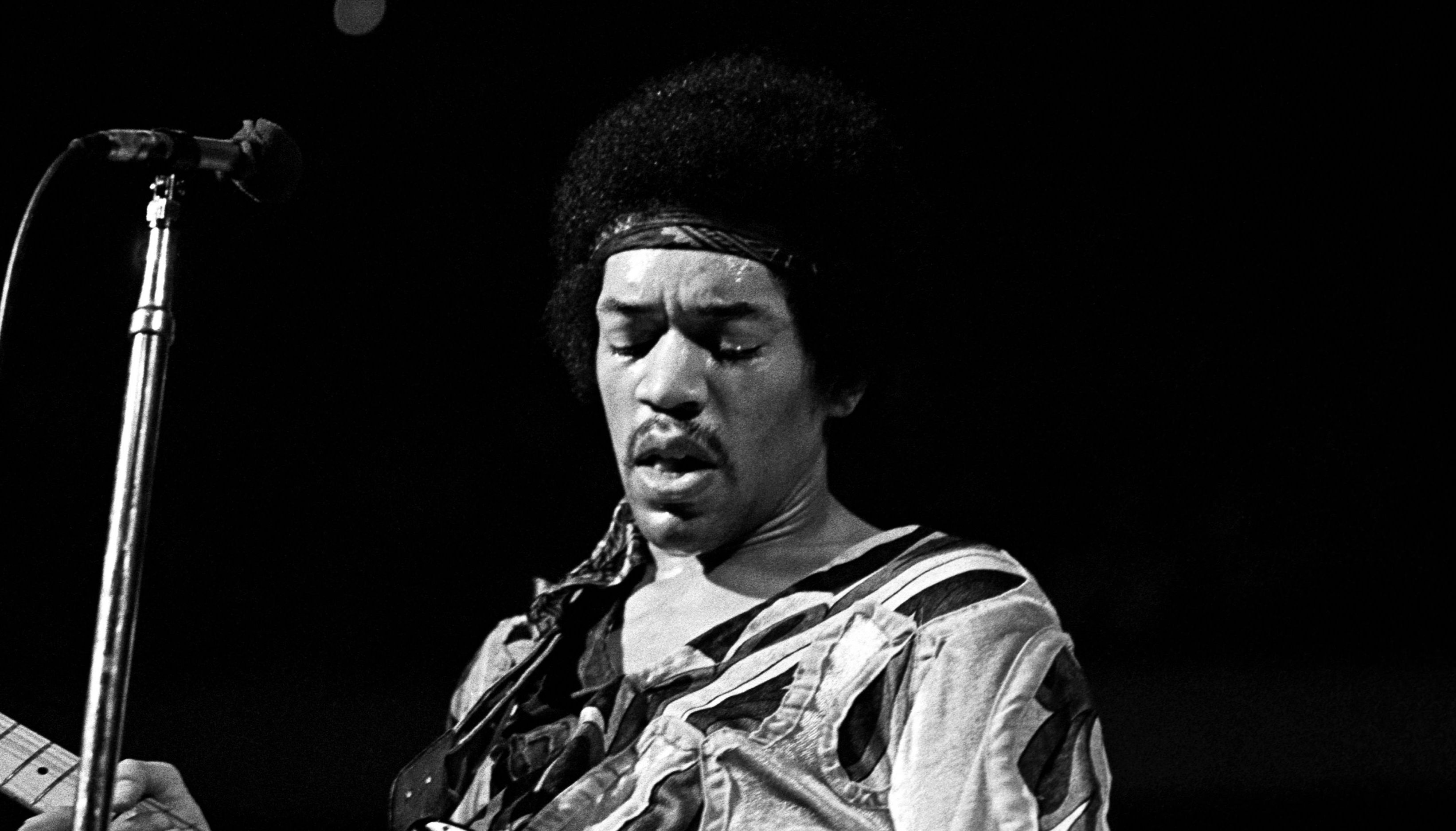
Washington state officials passed a bill to rename a post office near Jimi Hendrix‘s hometown of Seattle to honor the guitar god.
Both of Washington’s U.S. senators, Patty Murray and Maria Cantwell, supported Rep. Adam Smith’s bill to rechristen Renton Highlands Post Office as the James Marshall “Jimi” Hendrix Post Office. The bill was signed into law last week after it passed unanimously.
The post office, located in the Seattle suburb of Renton, is less than a mile from the Jimi Hendrix Memorial in the Greenwood Memorial Park cemetery, where the rock legend is buried, the Seattle Times reports.
“I am honored to join in paying tribute to rock and roll icon and Seattle native Jimi Hendrix with the renaming of the Renton Highlands Post Office as the James Marshall ‘Jimi’ Hendrix Post Office Building,” Rep. Smith said in a statement.
“This designation will further celebrate Hendrix’s deep connection to the Puget Sound region and help ensure that his creative legacy will be remembered by our community and inspire future generations.”
The renamed post office is the Seattle area’s latest tribute to Hendrix, who was born and grew up in the city and attended the city’s Garfield High School. In June 2017, the 2.5-acre Jimi Hendrix Park opened in Seattle’s Central District – near his childhood home – after a decade of delays.
“Seattle will always be Jimi’s home,” Janie Hendrix, the guitarist’s sister and president and CEO of Experience Hendrix, said at the time. “This very area is where Jimi grew up, where his dreams were cultivated and his creative energy awakened, in many ways. So to see this amazing place of beauty, dedicated to Jimi and his artistry, blossom into reality is indescribably fulfilling.
Books
TURNING MICHELLE OBAMA’S ‘BECOMING’ INTO A CLASS CURRICULUM FOR BLACK GIRLS
Published
5 years agoon
December 29, 2018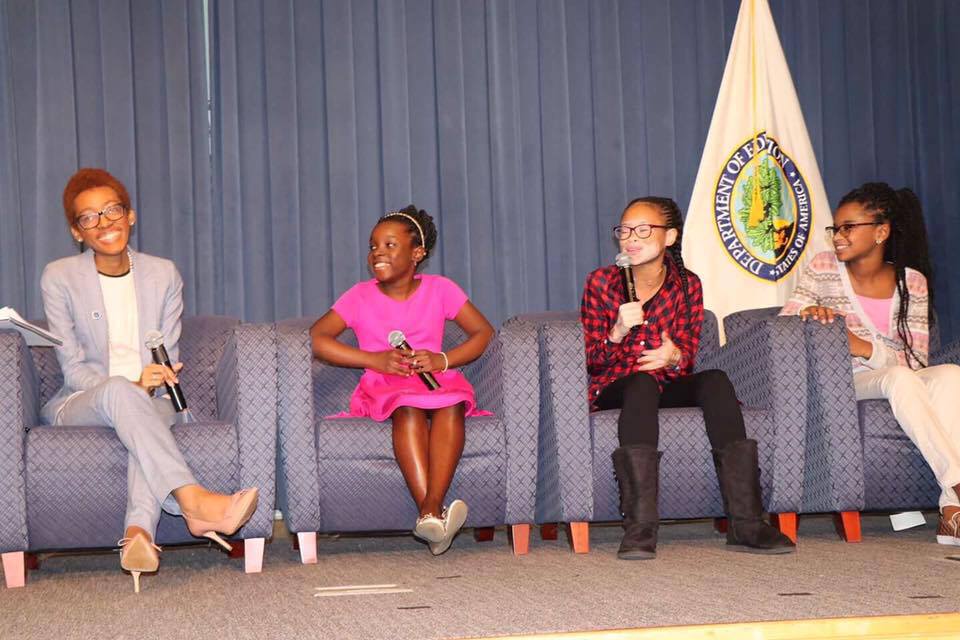
Lauren Christine Mims is a former assistant director of the White House Initiative on Educational Excellence for African Americans and a Ph.D. candidate in Educational Psychology at the University of Virginia. She’s also one of the many women inspired by Michelle Obama’s Becoming, a New York Times best-selling book that sold more than 1.4 million copies within the first seven days of its release. Now, Mims is turning Obama’s book into a curriculum for black girls to further their learning and development.
“Reading Becoming was like sitting on the couch with your best friend and having one of those soulful conversations about life,” said Mims.
“Reading about how Michelle Obama felt unchallenged in elementary school, teased for the way she spoke, and noticed a difference in how she was perceived during adolescence was affirming.”
Mims hopes the Becoming curriculum will make space for black girls to thrive in a world that often seems to try and deny their humanity. As part of her doctoral research at the University of Virginia, Mims explores what it means to be a young, gifted, black girl in school.
“I disrupt the traditional practice of talking about black girls in pejorative ways and center them and their unique experiences to study how we can support them. For example, my research highlights what ‘Black Girl Magic’ means to black girls; the role teachers play in supporting or stopping the success of black girls; and more about what they are learning and how it makes them feel.”
“If you follow Jada Pinkett Smith, Adrienne Norris, and Willow Smith, think about my interviews as Red Table Talks where black girls are supported in discussing challenges and designing solutions.”
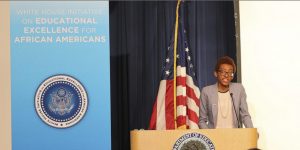
As part of the curriculum, students read Becoming, and watch films featuring black girls in leading roles. Additionally, “we will have important conversations, like about what it means to feel like your presence is a threat or that you do not belong. We will discuss Maddie Whitsett and McKenzie Nicole Adams; two 9-year-old black girls who died by suicide after being subjected to bullying. At the end of the course, students will apply their knowledge to draft new research proposals, policies, and practices,” says Mims.
Beyond the walls of the classroom, Mims says there are four things we can all do to support black girls:
- Create supportive, affirming, and loving environments by listening to their needs and centering their unique experiences of Becoming;
- Advocate for, adopt, and enforce school policies and accountability practices that recognize the brilliance of black girls and ensure they are not being pushed out of school.
- Address the bullying, harassment, and discrimination of black girls and ensure that all students have access to mental healthcare;
- Care for your own mental health and well-being.
Ultimately, Mims wants girls to know that they are enough. As Michelle Obama writes, “Becoming isn’t about arriving somewhere or achieving a certain aim,” yet there is so much pressure in college to define your identity and pick a career path. It can take a toll on you. Know that you are brilliant and never “underestimate the importance you can have because history has shown us that courage can be contagious and hope can take on a life of its own.”
Stay Up to Date

BLAQER Influence: Black 10K Project

Grow Your Small Business: Part 1 – Build Your Brand




